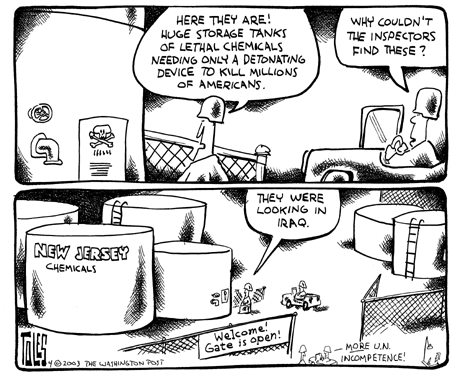More on Chemical Plant Security
The NY Times is rather upset about the Administration's weak attempt to address the chemical plant security issue. Reprinted below is an editorial from today's paper. (For an extensive review of the chemical plant security debate, scroll down to Sunday, May 4, 12:10 AM.)
New York Times Editorial: Chemical Security
A draft bill setting forth the administration's ideas for protecting thousands of vulnerable chemical facilities against terrorist attack is now circulating among members of the Senate's Environment and Public Works Committee. The bill is a weak response to an urgent need. The Environmental Protection Agency has identified 15,000 chemical plants, refineries or other sites that store large quantities of hazardous materials. Most of these sites are in relatively unpopulated areas. However, the agency has also identified 123 sites where toxic gases released in a terrorist attack could kill or injure more than one million people in or near each plant, as well as 700 other sites where the death and injury toll could reach 100,000.
The administration bill would require all plants to conduct a "vulnerability" assessment and prepare plans for reducing the likelihood of a terrorist attack and minimizing the damage should one occur. That's a useful first step. But the bill muddies the question of accountability. It does not, for example, require even the most dangerous plants to submit their plans to the Department of Homeland Security for review. The administration says it doesn't have the resources. But without such reviews, the public can never be sure whether company plans meet federal standards.
In addition, the bill asks nothing particularly creative of industry. An alternative measure offered by Senator Jon Corzine of New Jersey would have industry explore new technologies - less volatile chemicals, for example - and require their use where "practical." But even exploring safer technologies appears offensive to the administration, whose bill seems tailored more to industry needs than to those of public safety.
-- May 5, 2003, Copyright 2003, The New York Times Company